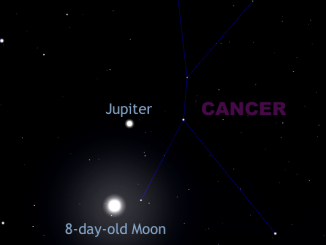
Pollux

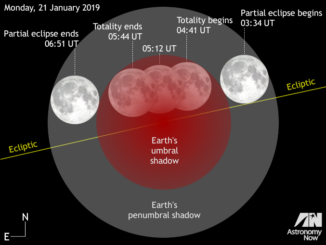
A viewing guide to the totally eclipsed supermoon of 21 January
While you may not relish the prospect of waking up in the small hours most Monday mornings, observers in the British Isles and Western Europe will want to set their alarms no later than 5am GMT on 21 January to see this month’s showstopper celestial event — a total lunar eclipse of an unusually close ‘supermoon’. The total lunar eclipse is also visible in its entirety (weather permitting) from the Americas.

Don’t miss the Geminid meteor shower 13–14 December 2018
The December Geminid meteor shower is generally regarded as the richest and most reliable of the major annual shooting star displays. This year the predicted peak occurs close to 12h UT on 14 December, though high rates of activity should be encountered between 8pm GMT on Thursday, 13 December and 5pm GMT the following evening.

See innermost planet Mercury’s favourable dawn show
Mercury attains its maximum westerly elongation from the Sun on 26 August, meaning that the innermost planet is currently well placed for observation from the UK and Western Europe in the eastern sky around 40 minutes before sunrise. In addition to those in the evening sky, you might just see all five bright naked-eye planets this month!
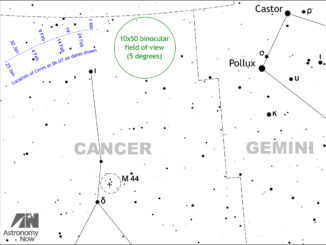
See dwarf planet Ceres at opposition on 31 January
While antipodean observers are enjoying views of the totally eclipsed Blue Moon in Cancer the Crab on the night of 31 January/1 February, Northern Hemisphere observers should look out for magnitude +6.9 1 Ceres at opposition in the northern fringes of the same constellation. The dwarf planet puts on a good show in the dark of the Moon during February.
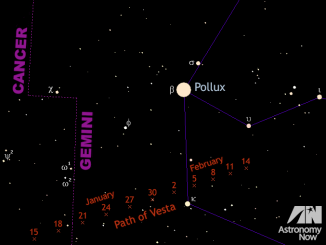
See brightest asteroid Vesta at its best
On Wednesday 18 January, brightest asteroid 4 Vesta comes to opposition in the constellation of Cancer bordering on Gemini, ideally placed for observation by Northern Hemisphere skywatchers. While the truly eagle-eyed among you might glimpse it with the unaided eye on dark, moonless nights, Vesta is an easy binocular object.
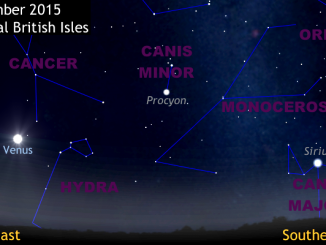
See planet Venus dazzle at greatest brilliancy in the pre-dawn sky
Early risers wishing to see Venus as a dazzling ‘morning star’ need only glance low to the east in the pre-dawn sky. The planet reaches greatest brilliancy on Sunday, 20 September when, for a couple of mornings, it can be seen outshining brightest nighttime star Sirius in the southeast by a factor of seventeen times. Can you see your shadow cast by Venus?
